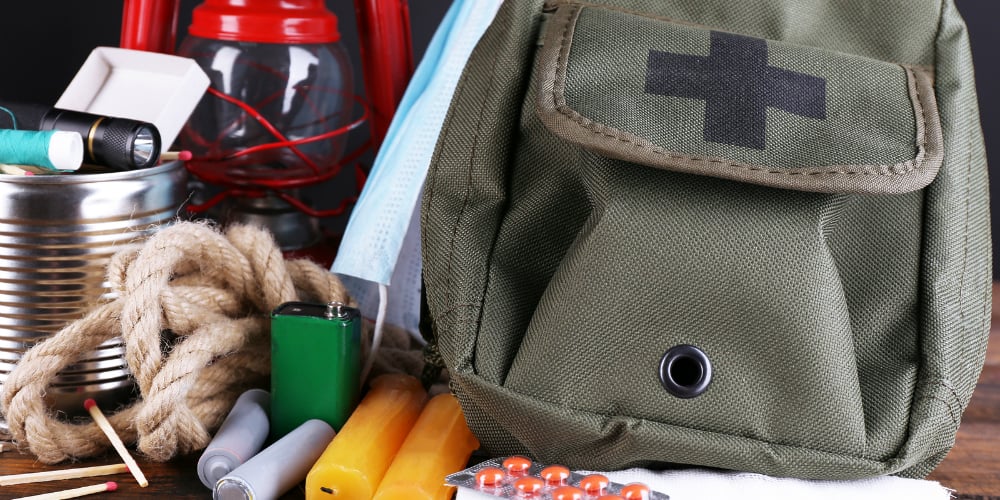Emergency preparation on a budget

According to the CDC, nearly half of all adults in the United States do not have resources or plans in place for an emergency situation. For some folks, this can be attributed to an attitude of “it won’t or can’t happen here.” For others, however, cost and uncertainty are factors in their lack of preparation. Purchasing an emergency kit is one way to begin preparing, and these can be found in many grocery and sporting goods stores. If the cost of these prepackaged versions is a concern, assembling your own emergency kit can be a great way to save money and learn more about emergency preparedness. Planning now can also help you avoid financial challenges in the future. But where to start?
Talk to your family.Having a plan can be as important as assembling a kit. Where will you meet if there is an emergency, and where will you go? What kinds of items will be included in your family’s kit and where will it be stored? Having a plan not only helps you prepare logistically, it can help ease your family’s anxiety in an emergency situation by providing a structured response.
Assemble the kit. A 72-hour emergency kit is the most optimal choice, but if cost is a concern, starting with a 24-hour kit is not a bad option. You can assemble a reasonably effective one-day kit for around $50. Depending on your personal needs, geography, and probable disasters, you should consider the following items to start your kit:
- Reusable shopping bag (can be used to hold/store the kit)
- At least a gallon of water (per person)
- Non-perishable, easily-prepared, calorie-dense human food
- Food for your pet
- Flashlight with batteries (plus extra batteries for anything in your kit that needs them)
- First aid kit (most grocery stores sell these inexpensively)
- Shower curtain (a more durable alternative to a combined poncho and rain barrier)
- Cell phone charger (if possible, both a wall and car charger)
- Newspaper (can provide warmth, kindling, and entertainment)
- Toilet paper (for its traditional uses)
- Duct tape (a tool of many unexpected uses)
- Local road map (especially important if digital maps are limited or unavailable)
- Copies of your important documents
- A pocket knife or multi-tool
- A short-term supply of your prescription medications
Put aside a little cash.In some emergency situations, funds at your financial institution may not be available. Adding only $5 in cash to your emergency kit each week can provide you with more than $200 after just one year, which could make a huge difference.
It is not likely that you can prepare fully for every potential emergency or disaster, but finding affordable ways to start the process can help you be ready when something does happen.





